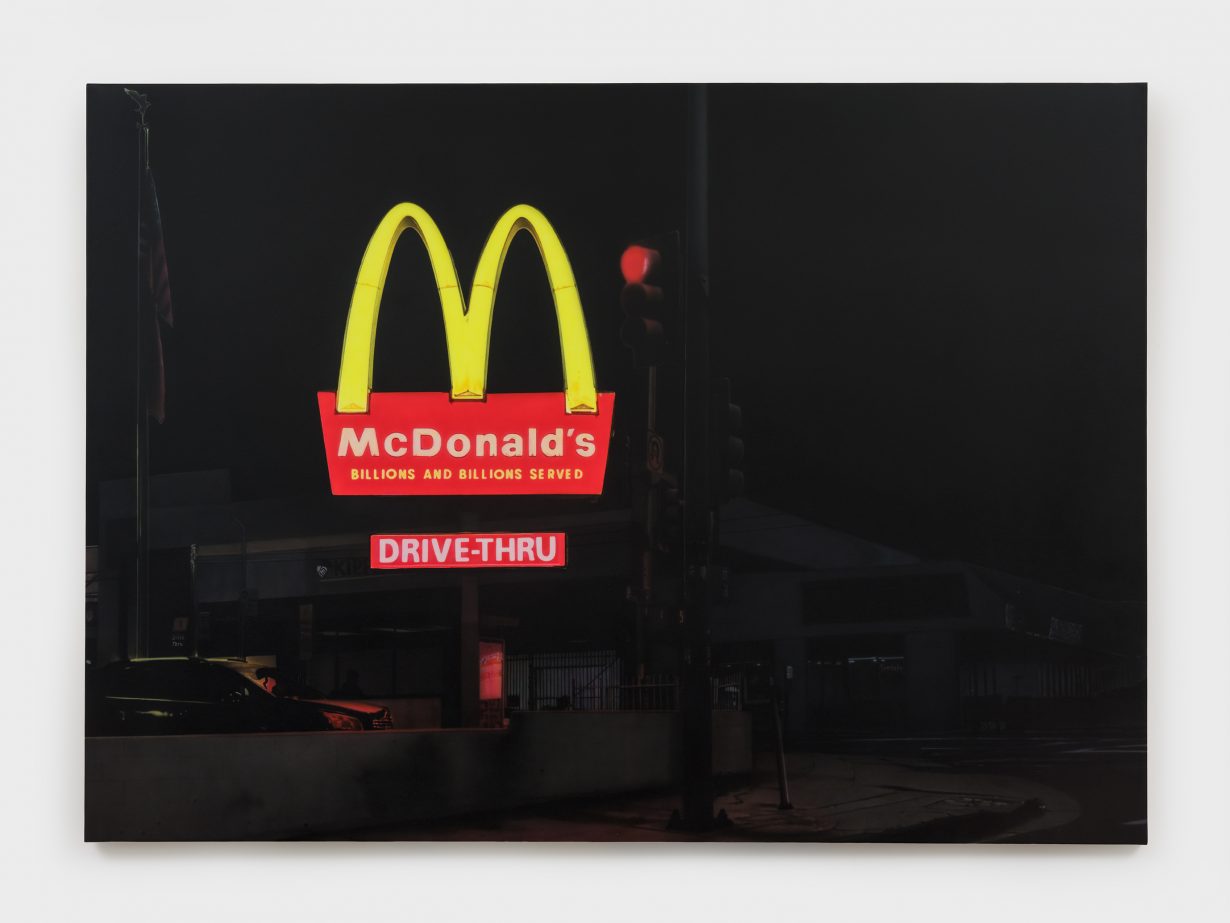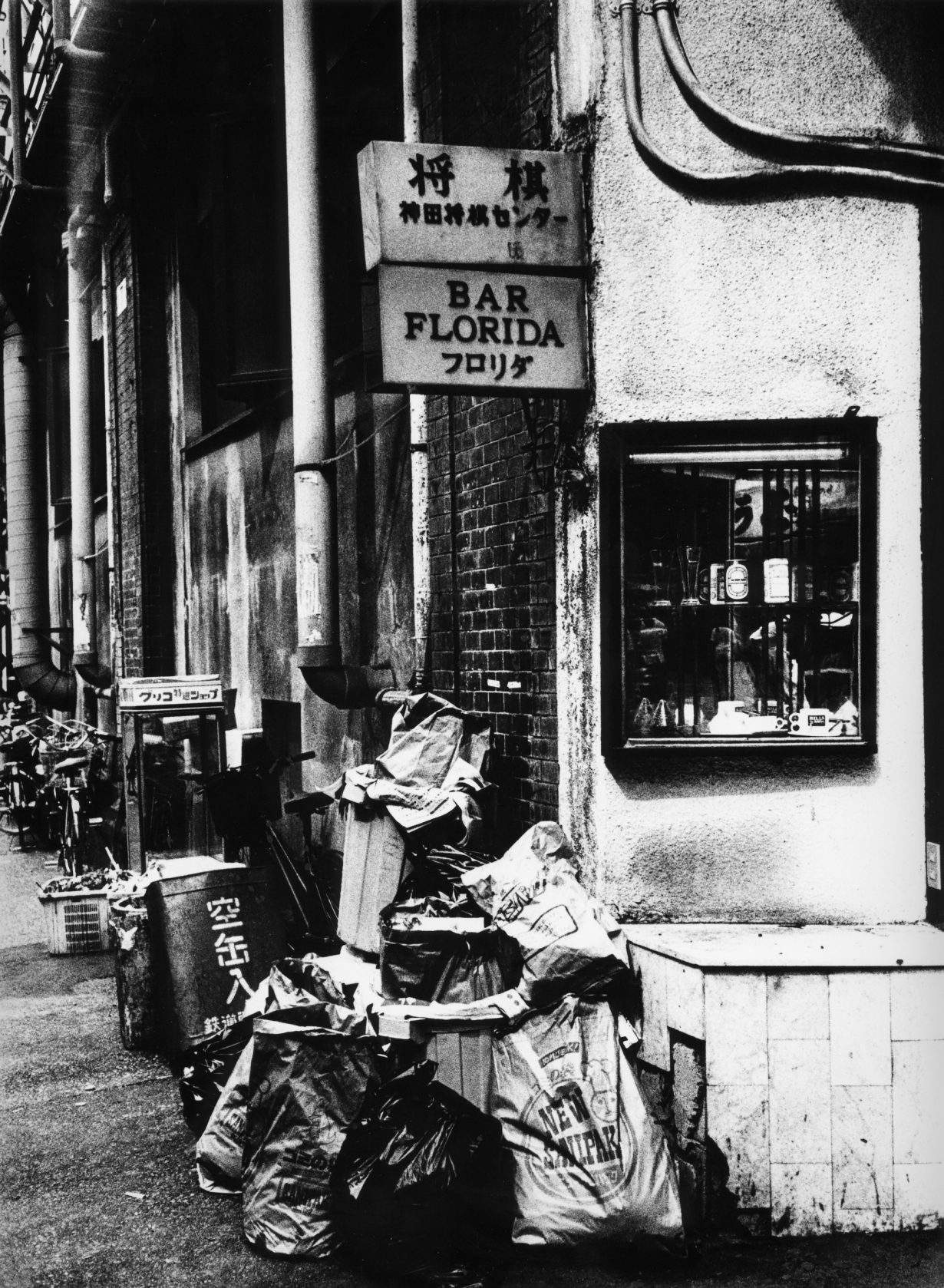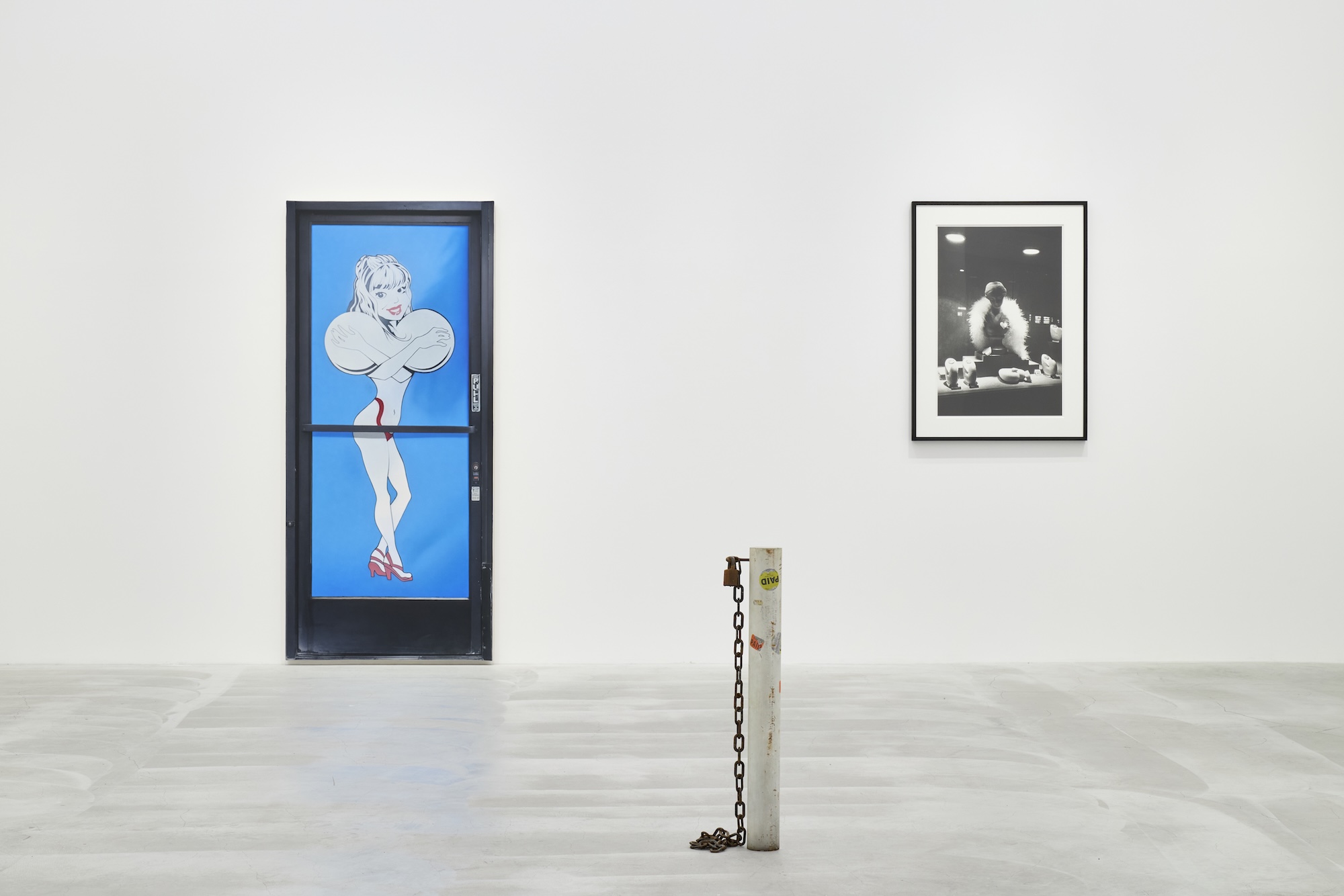At Taka Ishii Gallery in Kyobashi, Tokyo, the artists are united in their exploration of urban decay, mystery and peace
If I had to guess what convinced the New York-based curator Matt Black to juxtapose the work of contemporary Los Angeles painter Sayre Gomez and esteemed Tokyo-based photographer Daido Moriyama, I would point to the small black-and-white photograph displayed at about the midpoint of one’s walk around the gallery, which mirrors a recurring motif deployed by Gomez: the overencumbered signboard. With this first link established, many more come into view. Within the walls of the gallery, Gomez and Moriyama, despite working decades and hemispheres apart, seem as if neighbours, comparing the same urban decay, mystery and peace.
Among their shared qualities, Moriyama and Gomez stand out as outsiders. Moriyama’s move from Osaka to Tokyo as an adult, and Gomez’s from Chicago to Los Angeles, seems to be what defines the distinctive distance between these artists and their creative centres. Both employ comparable methods across mediums to express this distance to the viewer: for Moriyama it appears in the matt, overexposed, too-white walls of a Shinjuku bar on a morning walk; for Gomez it could be called the entire hyperreal aesthetic that characterises his paintings, the ultra-waxy sheen of a lamppost banner advertising a new musical of Mrs. Doubtfire. All images in the gallery are city scenes free of people, establishing a relationship between the viewer, artist and image that is up close and maybe personal, but distinctly noncommunal. Gomez’s painting of a McDonald’s sign at night is rendered in disorienting flatness, like an Edward Hopper scene without the lights or the people, the streets and buildings compressed by the painter’s darkest shades and the Golden Arches floating on their lonesome, the restaurant itself out of sight.

Mclane. © the artist. Courtesy Taka Ishii Gallery
A specific feature of both artists’ work being foregrounded here is deterioration. Deterioration often takes form as a physical decay, such as in Gomez’s Family Dollar Star Video 4 Less (2025), a towering, weather-worn signboard with pieces missing, plastic illuminated by the afternoon sun and showing through to the other side. This is true also for most any photo from Moriyama in the gallery, about three quarters capturing Tokyo’s nightlife centers in their less glamorous hours, like in the picture taken outside a “Bar Florida”, its window display a mess and paint cracking off in chunks. It is hard to ignore that there is also a kind of moral or cultural deterioration that is being framed here by the choice of subjects, a certain crassness felt in the presence of so many visible signs for bars, pachinkos and fast food, particularly when captured in such degraded conditions. Perhaps their presence, or the amplification of their presence, can be linked to the betrayal of expectations one experiences upon arriving in a so-called capital of culture.

In one case, the surface deterioration directly foregrounds a more pressing pain: there is an upsettingly haphazard clinic-entrance shot by Moriyama in which some kind of marker or tape on the door has been used to clarify, in blocky Japanese characters, that it handles internal medicine, surgeries, proctology, gynaecology and venereology. Moriyama’s early city-photography has often been seen as a reflection of the American occupation of Japan and its consequences, and this picture seems to have something more pointed to say than the others around it. I am not sure whether Matt Black chose this image knowing what was written on the door or not. The first photo I mentioned, of a utility pole, although used succinctly to put Moriyama and Gomez together in the same sentence, also gives a little pause after seeing the rest of the images. Another sign in the background tells us we are in Isogo, two cities away from Shinjuku, where the gallery’s press release says we are (although I don’t doubt they know this), and the Gomez-esque signboard at the front does not impose upon the viewer the saturated totality of urban living but simply lists the car models that the small Daihatsu repair-centre next to it handles. The picture is a reminder that Moriyama’s images have been carefully chosen to resemble Gomez’s. Given the photographer’s body of work, this is, on balance, probably inevitable, and the photo a forgivable outlier in the exhibition’s otherwise engaging space–time trip.
Hellooooo at Taka Ishii Gallery, Kyobashi, Tokyo, through 31 May
From the Summer 2025 issue of ArtReview Asia – get your copy.
